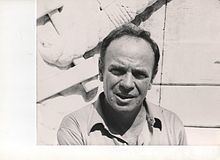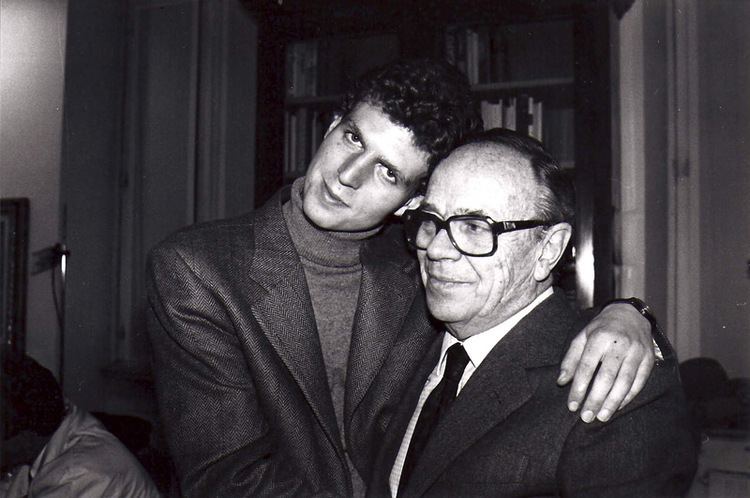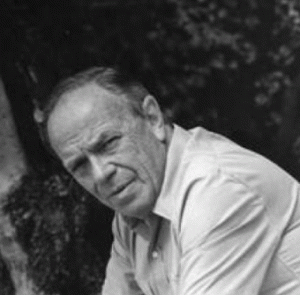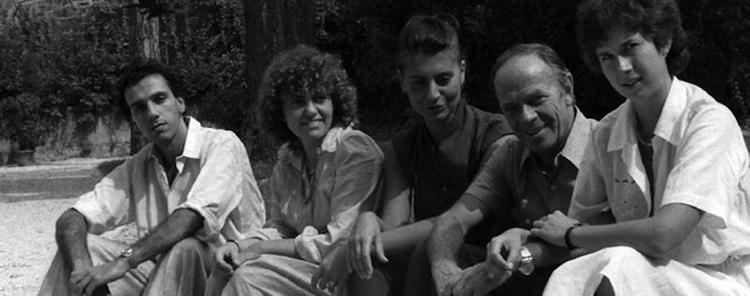Name Giuliano Briganti | ||
 | ||
Died December 17, 1992, Rome, Italy Books pittori dell'immaginario, The Bamboccianti | ||
Giuliano briganti e renato guttuso
Giuliano Briganti (January 2, 1918 – 17 December 1992) was an Italian art historian.
Contents
- Giuliano briganti e renato guttuso
- Giuliano briganti galleria alessandro vii
- Biography
- Main Works
- Writings published posthumously
- References
Giuliano briganti galleria alessandro vii
Biography

Giuliano Briganti was born in Rome. His father, Aldo Briganti, was an art dealer. Aldo studied under Igino Benvenuto Supino, graduated from the University of Bologna in 1914 with a thesis on Raphaelism, and was subsequently a student of Adolfo Venturi at the Advanced School of art history, part of the Faculty of Arts at the Sapienza University of Rome. Briganti's mother was named Clelia Urbinati.

In 1936 Giuliano Briganti graduated from Ennio Quirino Visconti High School in Rome. In 1940 he received a degree in history of medieval and modern art from Sapienza university, disputing his thesis with Pietro Toesca on the cinquecento Bolognese painter Tibaldi. The thesis later took the form of a monograph, Mannerism and Pellegrino Tibaldi, published in 1945.

Briganti’s first writings on art date to 1937, in the monthly “La Ruota”. In 1940 he sat on the editorial committee of the magazine, together with Mario Alicata, Antonello Trombadori, Guglielmo Petroni and Carlo Muscetta, contributing various pieces until 1941. In 1938 he began to publish essays and reviews in “La Critics d’Arte”, the art magazine founded by Carlo Ludovico Ragghianti and Ranuccio Bianchi Bandinelli. Between 1944 and 1945 he was editor of “Cosmopolita”, a magazine founded by Alessandro Morandotti in June 1944 during the liberation of Rome. This weekly, a precursor of “L’Espresso”, published work by many of twentieth century Italy’s foremost intellectuals: as well as Briganti himself these included Carlo Lizzani, Michelangelo Antonioni, Enzo Forcella, Giorgio Bassani, Renato Guttuso, Roberto Longhi, Anna Banti, Guido Carli, Arrigo Benedetti and Gastone Manacorda.

From 1965 to 1968 he wrote a weekly art column for L'espresso, a position formerly held by Lionello Venturi and Carlo Ludovico Ragghianti. He was an art critic for la Repubblica from 1976, the year the newspaper was founded, until he died. In both cases he had been chosen as critic by Eugenio Scalfari, first for the weekly and then for the daily edition. Giuliano Briganti expressly named two men as his masters: Carlo Ludovico Ragghianti and Roberto Longhi. He was the latter’s secretary from 1941 to 1943, at his study in Via Benedetto Fortini 30, Florence. From 1950, with Francesco Arcangeli, Ferdinando Bologna and Federico Zeri, he was on the editorial board of the new magazine Paragone Arte, founded by Roberto Longhi, which until 1961 published important essays by Briganti on seventeenth century Italian painting. He left the editorial board definitively ten years later, in 1971.

In 1949 he qualified as a university teacher and beginning from 1972 taught the history of modern and contemporary art at the University of Siena. In 1974 he got married to Luisa Laureati. In 1983 he moved to Rome where he held the chair of modern art history for a decade at what was then the Magistero and today is the Third University of Rome.
Giuliano Briganti’s library and photo library, today owned by the Municipality of Siena, are housed in Palazzo Squarcialupi, Siena, which is part of the Santa Maria della Scala complex. The books and the photographs of art works are accessible to the public. Information available online at the Comune di Siena website, Biblioteca Giuliano Briganti.
